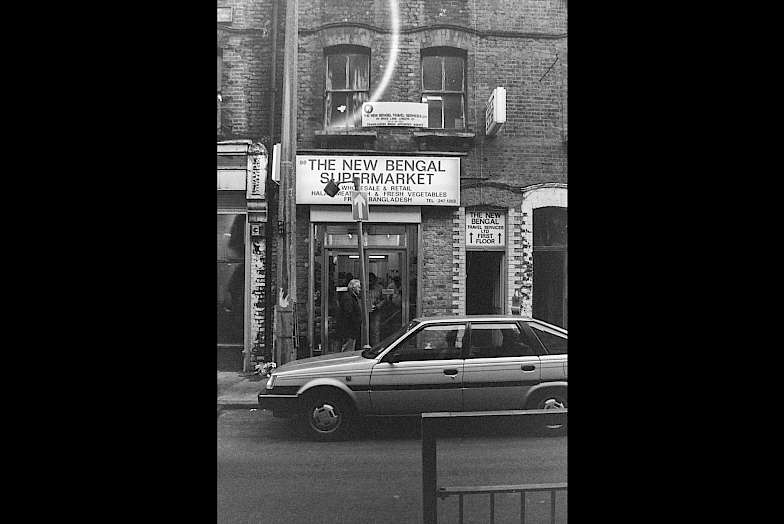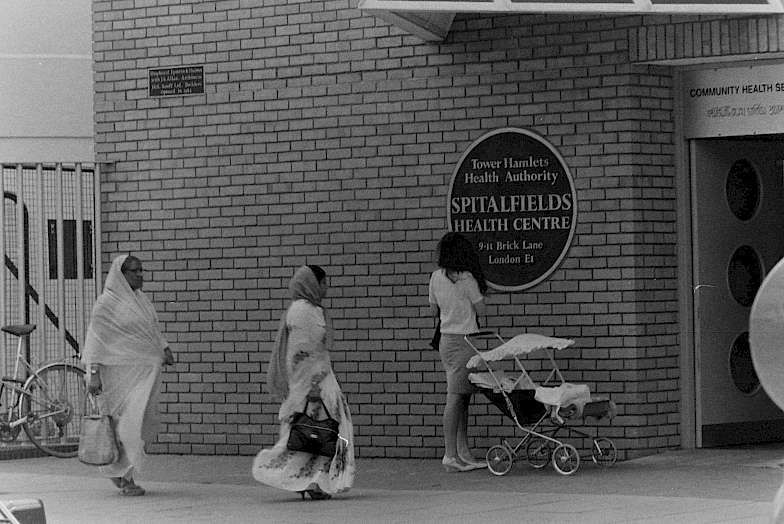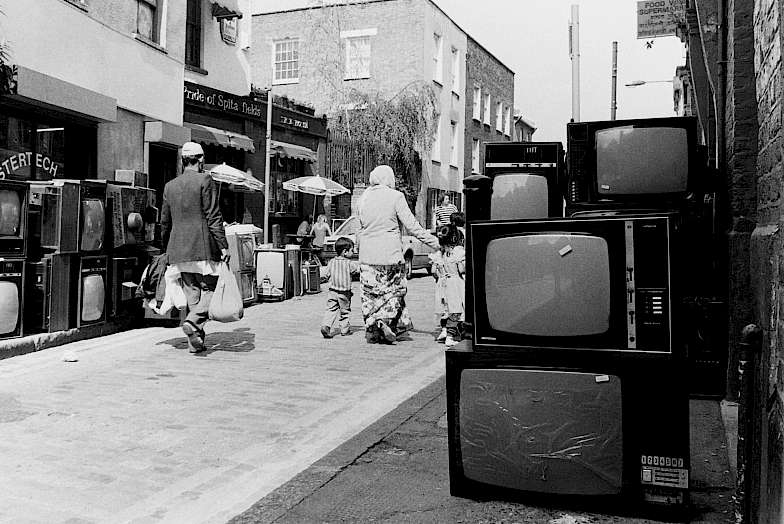Historically, Brick Lane has been a ‘safe haven’ for local Bangladeshis. As the Banglatown concept and, with it, the Bengali identity of Brick Lane comes under increasing threat, the future of this community’s relationship with this iconic street is unclear.
Today, the northern end of Brick Lane is marked out by ‘high-end’ retailers, selling comparatively expensive goods and services. Many of these stores are oriented either to the visitor or to a changing demographic including an expanding student population as well as middle-class consumers.
In the southern end of Brick Lane, which contains most of the remaining Bangladeshi restaurants, there is a high turnover of shops: 80% of the curry houses that have closed over the last few years have been replaced with other food retail establishments. The site of The Famous Clifton curry restaurant, for example, is now home to Dark Sugars, a boutique chocolate shop. Speaking about Brick Lane today, a local planning officer said:
‘Brick Lane is very much composed of different parts. The southern half of Brick Lane leading towards Whitechapel High Street is one zone, and the other, the northern end towards Bethnal Green Road, is very gentrified.’
These changes in Brick Lane’s local economy and broader infrastructural developments have elicited mixed responses among local Bangladeshis. Some restaurant owners were positive about recent developments. One of Brick Lane’s youngest Bangladeshi proprietors said:
‘I think every single new business that opens brings opportunity with it. And the diversity of this area that it has brought, especially with like media, music and TV, film companies and internet companies and new types of restaurants and all those kinds of things, they generate jobs and, you know, they bring the standards up in the area. And so, I can't see why that's not a good thing.’
Another Bangladeshi restaurant owner commented:
‘Different kinds of cuisines have opened up – it’s good to have an open vibe.’
Others were less upbeat. One restaurant owner said:
'It’s not really Banglatown anymore – Brick Lane should be renamed “food capital” not “curry capital".'
One young Bengali waiter wasn't optimistic about his own prospects in the local area. He told us:
‘Everyone’s talking about it – it’s all regeneration, regeneration, regeneration. But regeneration should be for the local people not for people just coming in from wherever. I was born in this area, but it’s impossible to buy a place around here now. Take my dad: he bought a two-bedroom council flat in the mid-1990s for £33,000. The same place is now worth £450,000. That’s good for my dad, but it’s no good to me. Doing a job like the one I’m doing, I’m never going to make the type of money to buy a place like that.’
Some locals were of the opinion that the changing make-up of Brick Lane was inevitable. One local Bengali business owner said:
‘from the Huguenots to the Jews to the Bengalis, people have passed through here, and people will pass through continually. And businesses will fade because they're no longer appropriate for the people coming through.’
A Bengali who was born in Brick Lane in the 1950s and who still lives on the street had similar sentiments about the transient nature of communities on Brick Lane:
‘this is the third change I'm seeing. I was there when the Jewish people were there, I was there when the Bengali people were there, I'm there now when the hipsters are there. You know, they'll probably move on.’
Today, the London Borough of Tower Hamlets, where Brick Lane sits, is home to the largest concentration of Bangladeshis in England and Wales. Census data from 2011 recorded that 32% of the borough’s population was of Bangladeshi ethnicity (including those born both in the UK and outside the UK), and that 15% of the borough’s total population was born in Bangladesh. The 2011 data recorded that 57% of the borough’s children (aged 0 to 15) were of Bangladeshi descent, making up the majority of the school population, and 18% of residents cited Bengali as their main language.
Looking ahead, it is unclear what place Brick Lane will hold in the lives and livelihoods of this Bangladeshi population, especially as increasing numbers of Tower Hamlets homeowners trade in their houses and flats for more spacious accommodation in other East London boroughs like Newham and Redbridge. It's evident from our research that younger British Bangladeshis growing up in suburban locations do not have the same emotional or economic relationship with Brick Lane as their parents do.
Reflecting on recent changes and the future of Bengali Brick Lane, one restaurateur said:
‘I still consider it to be the heart of the Bengali community. Though it doesn't have the hustle and bustle of the '70s, '80s or '90s, to be honest. Now the hustle and bustle has moved down to Whitechapel and Bethnal Green Road.’
A Bengali restaurant manager told us:
‘Brick Lane is very important for us [Tower Hamlets] Bangladeshis – we feel safe here and it’s where other Bengalis come and visit. Other people come from all over the world to Brick Lane also. It’s near the City too – so people are mixing and that’s a good thing. They can see the [Muslim] religion and learn something about our culture.’
Another Bengali restaurant owner asserted:
‘as far as the Bengali community are concerned throughout the country, still Brick Lane is the centre of the Bengali community, the capital city of the Bengali community. That will remain.’
There is much, however, that remains uncertain. The ‘Beyond Banglatown’ project ended in February 2020, shortly before the coronavirus crisis hit London. It is difficult to ascertain the impact of the crisis on the restaurant trade in Brick Lane, though it is likely to be severe, if not devastating, exacerbating existing challenges and posing new ones.
We discovered that only two curry restaurants and three cafes remained open on Brick Lane during the lockdown for takeaway business, though almost all restaurants reopened when the lockdown was lifted. Nevertheless, Brick Lane's reputation as the foremost cluster of curry restaurants and cafes in the UK is, according to some, unlikely to survive for much longer. As a representative of the British Bangladesh Chamber of Commerce & Industry told us:
‘Of all the sectors in the British economy, the hospitality industry has likely suffered the most. But what’s so sad for British Bangladeshis of my generation, especially those of us who made our livelihoods through restaurants, is that Brick Lane has been so badly affected by the downturn. To tell the truth, I can’t see Brick Lane surviving much longer as the curry capital of the UK – it’s dying. That said, I’m confident that Brick Lane will regain its vibrancy, but it will only do so if it provides food experiences for the new generation. And for that to happen ethnic minority businesses will need help and support.’




